
Role: 3D artist, UX designer
Inclusive Design

At Anchor we pride in helping hotels
achieve a better customer experience
for everyone.
/ Project
Anchor is an inclusive design project that was carried out in collaboration with Nicola Arcenas, Luis Vidal and Daniela Molina under the coordination of Professor César Martín Gómez during the fourth year of the Design degree at the University of Navarra.
The project as a whole covers, on a hypothetical level, the issue of adapting spaces for people with visibility problems. It was approached by developing a protocol manual that functions as a guide for the design, organisation and management of the hotel, including the procedure to be followed in case of an emergency. The objective is to ensure an upgrade in their overall service to the level of creating memorable experiences.
/ Editor's letter.
Anchor
¨
At Anchor we also constantly emphasize the value of an individual. The services we offer are founded at the core of human dignity and heartfelt hospitality. We believe that having a hotel experience, that is filled with care, warmth, empathy and creativity will push everyday boundaries. These core values may sound idealistic but when worked on, both workers and clients get a different hotel experience.
Anchor Team
¨
Globally, at least 2.2 billion people have a vision impairment or blindness. This is not easy to accept. Being told you have a visual impairment that can’t be treated can be difficult to come to terms with. The world automatically poses more difficulties – fear naturally kicks in. However, in many ways, a blind person can still manage to be like any other person that’s sighted. Being blind should not be transformed into a huge hindrance for enjoying one’s life. Those who are visually impaired still have every right to enjoy what this world offers – including what the hotel industry can provide.
Anchor was born when we realized that many hotels have a lack of accessibility for those who are visually impaired. Many could not even enjoy a comfortable stay in a lodging without being obstructed by several barriers.
At this day and age it is inevitable that more hotels will continue upgrading their overall service to the level of creating memorable experiences. The hotel or hotel groups that will succeed are ultimately those who know how to satisfy each customer’s needs regardless of what disability one may have. The hotelier has to understand the employee and client needs and wants. At Anchor we pride in helping hotels achieve this customer experience. But we particularly specialize in bettering the experience of those who are blind or visually impaired. These people need highly visible guidance markings to find their way around. We provide both visually and tactilely contrasting markings for indoor and outdoor environments. These new adaptive designs are also supported by a High level training bootcamp for the hotel staff, that allows them to empathize with the needs of those who are visually impaired. When applying our service, guests of any hotel will feel more safe and independent.
Design brief
This short publication is designed to help you and your staff understand these obligations. Anchor gives businesses a certain degree of flexibility in eeting these obligations. If some steps are too costly or burdensome for you to undertake, you must use alternative methods that are not so costly or burdensome in order to afford people with disabilities as much access as possible to your goods and services. To make sure your hotel and the services you offer do not discriminate against people who are blind or who have low vision, it is helpful to think about how guests use your hotel: How do guests arrive at your hotel and what do they do once they get there? How do guests check-in and check-out? How do they move about yourfacilities? How are the rooms set up? What in-room guest services are provided? What other amenities are available?
'Everyone's different and while some disability awareness training can be helpful, I thinks that empathising the point that everyone is an individual and will have their own way of doing things is more important than giving staff a set list of things to do when meeting people with specific needs'. Kirsty M, Hampshire, UK. Blogger at http://unseen-beauty.com
Customer need


Customer Experience.
BEFORE ARRIVAL (01)
In order to provide facilities to visually impaired people, as a company we will have an agreement with booking companies all around the world to show hotels that offer our service. Through our website, the interested clients will be able to locate every hotel that has our service, re-directing them to the hotel webpage to make the reservation.
The hotel enables blind people the possibility to book via website, mobile app or phone call. In case the client books with the app, the hotel will receive a notification with the client information in order to know his/her situation and they will be in touch with the customer.
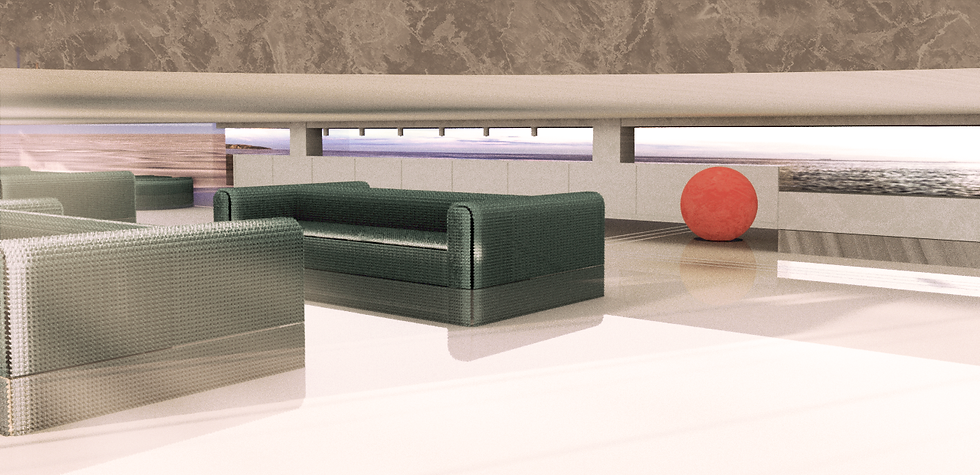


ARRIVAL Check in (02)
Ask what your guest’s needs are and explain what services you can offer. You should inform the guest what services – including alternate format materials such as Braille, large print, and audio cassette versions of printed material normally provided to guests – are available, offer assistance, and be guided by his or her response. Many hotels have found it helpful to have a package prepared for guests who are blind or who have low vision. This package might include items such as alternate format materials, a high contrast template to fit over the telephone keypad, and a list of available services, such as increased lighting in a guest room. Anchor can provide this package for you.
- Ask directly, do not expect answers from the guest’s companion (partner, family, friends)
- Do not explain where the hotel facilities are, but take the guest there. Visually impaired people need to remember everything.
- They will most likely be at your hotel for the first time, so take a tour (restaurant, swimming pool, terrace, shop) always proves to be more effective.
- Do not pet the assistance dog, because it is at work.
- Explain the emergency route and take your guest there after checking in. (A lot of focus should be placed here.)
- Provide cellular phone with Seeing AI Microsoft App. (Turns the visual world into an audible experience With this intelligent camera app, just hold up your phone and hear information about the world around you.)
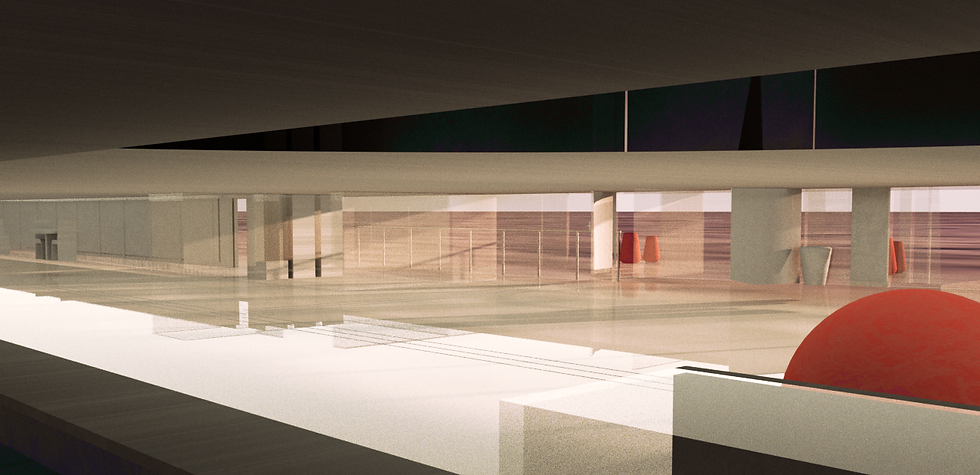

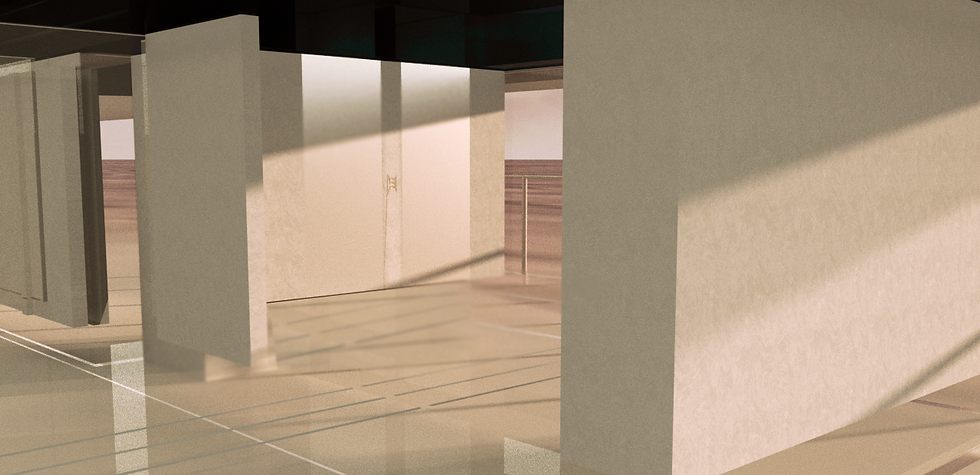

NAVIGATING elevators (03)
Floors should incorporate podotactile routes that guide visually impaired clients throughout the building enabling them to follow these guides detecting them with the canes.
Furthermore, the signs indicating the different areas of the hotel, as well as the buttons on the elevators should also be in braille, guaranteeing equal access to everyone on the hotel.


ARRIVAL TO ROOM (04)
Do not assume that a person who is blind or who has low vision will require or want to be placed in a room designated for people with disabilities.
¨
¨
Just as you would with other guests, ask the person about his or her preferences. If he prefers to stay in the specialized room, by all means let him do so, if not respect his decision. If someone is traveling with another person but they have requested separate rooms, ask whether they would prefer to be in adjoining rooms. For security reasons, most hotel receptionists inform the guest in writing of his or her room number. While guests who are blind or who have low vision should be told their room numbers orally, care should be taken so third parties do not overhear this information.
- Make sure to consult about the choice of the room (specialized rooms have taken into account the auditory sensitivity of the blind customer, interferences in the WiFi connection more accesibility to lifts and emergency exits...)
- Explain that one of the inconveniences that blind people have in hotels is not finding their bedroom, having to memorize doors therefore, phones will be provided wherein it will vibrate to indicate when you have arrived to your door
- Room numbers will be marked in braille and in high contrast letters
- Card keys will also be very accessible, as one simply has to scan and wave the card upon the door knob.
HOTEL EXPERIENCE (05)
Most hotel guests
with vision problems
can use any room.
Guests who are blind or who have low vision should be offered a thorough orientation to their guest rooms. If the guest accepts the offer, staff should explain the location of the bed, desk (and associated electrical outlet and data port, if provided), dresser, table and chairs, thermostat, television and remote control, light switches and lighting, closet, suitcase stand, and telephone. Staff should always inform guests as to the location of the nearest fire exits, using specific language such as, “In case of a fire, exit your room to the left. The emergency exit stairway will be the fifth door on your right.” Explain thoroughly this procedure while in front of the evacuation map behind the door. Let him feel and touch the 3D Braille Map to familiarize himself. (These Emergency evacuation instructions should be provided in a way that can be used effectively in the event of an emergency. One way to do this would be to hang Braille and large print evacuation instructions on the back of the door, adjacent to where they are posted for others to see. Audiotapes may not provide effective communication in the event of an emergency.)
Just as you would with other guests, ask the person about his or her preferences. If he prefers to stay in the specialized room, by all means let him do so, if not respect his decision. If someone is traveling with another person but they have requested separate rooms, ask whether they would prefer to be in adjoining rooms. For security reasons, most hotel receptionists inform the guest in writing of his or her room number. While guests who are blind or who have low vision should be told their room numbers orally, care should be taken so third parties do not overhear this information.
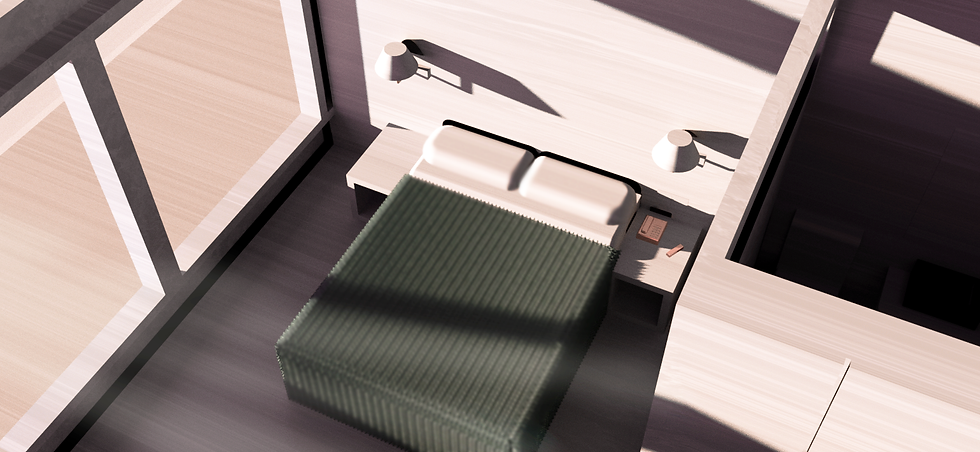


TAKE NOTE!
- It is important to have an increase in the amount of indirect lighting in order to be able to use and regulate it.
- Curtains, and how to use them (to control the influence of daylight)
- High contrast in the use of colours in the room and in the bathroom. A white bathroom is very difficult to use, as you can not identify the different components in it.
- There are no sharp objects or furniture. Tip: use soft and/or round materials.
- Display the coffee and tea set on the desk (not in a closet).
- Offer a Braille map.
- Offer an emergency plan in Braille.
- The room number clearly marked (on the door or in the hallway) in Braille. Also high-contrast colors, large font size).
Other things to take note of:
- When cleaning the room, the staff will be well trained to not move around personal things. This way we allow the user feel in control of his space.
- Braille indicator on air conditioning regulator, shampoo bottles...
- 3D decorative art to enrich the user experience with 3d and tactile objects.
Dining experience
- Ask the guest about his or her lighting preferences. Would he or she prefer to be near a window? Would he or she prefer a table with strong lighting? If the guest will be eating from a buffet, would he or she prefer to sit near it? In any case, do not try to “hide” your guests with disabilities by placing them in secluded areas.
- For buffet service, offer assistance in identifying and serving food on the buffet table, even if there is an assistance dog, or company. If one of the guest’s hands is occupied by holding a cane or using a service animal, staff may offer assistance
in carrying the food to the table.
- When meals are served, tell the guests that you are at the table, and that you are serving. Also tell them what you are doing (Here is your glass, and this is your plates and cutlery, etc.)
- Have several copies of your menus available in large font and in Braille, at the restaurant, the bar and the foyer.
- Offer a bowl of fresh water when you have four-legged company.
* Staff should also offer to tell the guest how to operate the drapery controls and explain whether the curtains are open or closed and opaque or see-through. Staff should offer to turn the lights on for guests with low vision. If a microwave oven, coffee maker, or safe is provided, its location and operating instructions should also be given. When orienting the guest to the bathroom, staff should explain how to work the shower, where the linens, ice bucket, and glasses are located, and what complimentary toiletries (shampoo, lotion, soap, etc.) are provided and how to distinguish them from each other. Staff may also offer to set up the iron and ironing.
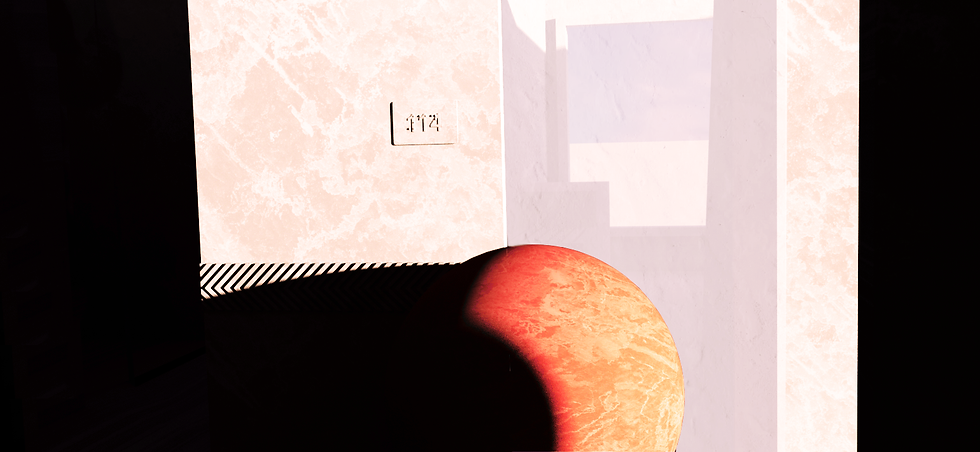


NAVIGATING AROUND (06)
- Stair railings should be marked at the beginning and at the end so people can feel it. Stairs, if possible, marked on each step.
- In the elevator, it is recommended that the display menu has braille or better a voice indication system.
- All doors and windows are marked to a preferred height of 150 cm (59 inches).
- Signage throughout the hotel should be in contrasting colors.
- Tactile marking on the outside of the sidewalk (ask the local government about the rules and regulations).
- Contrasting colours are recommended in public bathrooms. Walls against washbasin, toilet against floor, soap dispenser against wall, etc.
- Clearly marked door signage and door knob or handle.
The most important service for people who are blind or have low vision is not to have obstacles near doors, in corridors and near stairs or elevators.
Guests who are blind or who have low vision generally have the same right to use your recreational facilities as others. Unless there is a legitimate safety reason why someone cannot use a facility – a sound reason that is not based on stereotypes and that cannot be ameliorated by providing auxiliary aids and services or making reasonable policy modifications – you cannot exclude them from recreational activities. An example of when it might be appropriate to exclude a blind person would be if your hotel offers a go-cart track and requires users to be licensed drivers, and the person is not a licensed driver.
You cannot ask people who are blind or who have low vision to sign waivers of liability unless everyone who uses the equipment or amenities is also asked to do so. Any instructions for use – including hours of operation and safety rules – should be communicated orally to persons who are blind or who have low vision. If you use passcard-style keys for recreation areas, you should make those keys accessible to people who are blind or who have low vision, using the simple techniques described in “Check-In and Check-Out Procedures.”
Additionally, it can be difficult or impossible for people who are blind or who have low vision to use electronic exercise equipment, if equipment controls are on a touchscreen or touchpad. Simply putting a piece of tape over the “on/off” button and informing your guests of the tape’s significance can make the equipment more usable.



EVACUATION PROCEDURE (06)
The design of our service (included in the previous sections) is intentionally aimed at achieving a state of well-being of the user where the sensation of security, orientation, autonomy and control of the space stands out. These are not randomly chosen objectives but the plot of a strategic line that aims to minimize / alleviate the effects of common panic and blockade in case of emergency.
It is easy to underestimate the power and risk of individual panic in emergencies, but in terms of evacuation plan design it is as important to address the details of facility design and escape routes as the details of the user’s experience or perception of them.
Through these systems and the implementation of guide systems for the blind (soon to be mentioned) we can achieve a superior security for both the blind and the other customers of the hotel. These are some of the systems that should be implemented:
- Podotactile routes (With the aim of guiding the person to the nearest evacuation exit)
- Route + evacuation plan (Braille signage) Simple and concise information to facilitate accessibility and quick location for any visually impaired individual.
- Evacuation guide located at the bottom of the wall free of obstacles.
- Emergency exits correctly signposted and easily accessible. (May be accompanied by a hearing system in the event of an emergency).
The design of our emergency evacuation plan is based on an analysis of the individual's behaviour in the development of disasters
¨
¨
Among the main problems regarding this behaviour, the following have been detected:
- In the so-called pre-critical period two opposite and equally dangerous attitudes are observed: rejection of the idea of danger and exaggerated fear of danger.
- In the period of crisis a minority remains in ‘cold blood’, another minority presents extreme reactions of anxiety, anguish, paralyzing confusion, etc; but the majority remain stunned. In this period there is the ‘illusion of centrality’, i.e. the impression of being at the centre of the catastrophe, as well as the consequent feeling of abandonment.
- In the period of vacillation the individuals at the site of the emergency try to assess their situation and make decisions. The first expressive behaviours appear where the emotional tension is manifested: exclamations, cries, nervous breakdowns, fainting...
- Subjective sensation of being trapped and sharpened disorientation due to the complex distribution of the different plants, lack of visibility due to smoke, absence of lighting, presence of toxics and heat diffusion, absence of handrails or referents that facilitate the sensation of orientation and stability, etc.
- In the post-critical period, the disorder experienced can leave both physiological and psychic traces that can last a lifetime.
Taking into account these responses in the behavior of the individual, we offer a solution that refers to each of these negative sensations prevented from the first moment the user comes into contact with our service.
In this way, from the first instance, both in the personal dealings with the hotel staff and with the use of the application and texturization of the plans and signage of the emergency exits, the objective is to build a sensation of independence that reduces the probabilities of the individual entering a state of blockade and disorientation that prevent him from leaving the building safe and sound or provoke important sequels in the future. Having also experienced a safe stay due to the treatment given prior to the emergency, will also ultimately put him in a more stable mental state.
The check-out process procedure will be the regular one since the visually impared people usually like to be treated as people without disabilities. The final day of stay, they will be able to use our service (the app) to guide themselves to the reception and carry out the check-out process. The reception will have all prepared for them since the guests could notify with the app the day and the time they will carry out the check-out.
*Reviewing the Bill. Staff should give the guest a printed copy of his or her bill, even if the person cannot read standard print without assistance. If requested, you should also provide a large print copy. Staff should offer to review the entire bill with the guest in a way that respects the guest’s privacy. When the person has checked out, offer to provide assistance in locating the shuttle bus or a taxi.
CHECK OUT (07)
SURVEY
Experience
- The reception team was warm and welcoming (Strongly agree, Agree, Neutral, Disagree, Strongly disagree)
- The reservation preservation process efficient
- The check-in process was efficient
The staff was efficient in:
- Reception
- Dining room
- Cleaning staff
- The hotel room reached your expectations
- Improvements on service
- Hotel
- Team
Did you feel secure during your stay? Was there anything you would improve?
- Housekeeping team
- Food and dining team
- Evacuation procedure
In case of an emergency
- Have you felt secure during the process?
- Did you have difficulties finding the emergency exit?
- Was the staff efficient?
Facilities
Recommendations / Comments
Is there anything you would like us to improve?
HOW WE WORK

Your hotel or institution gets in contact with Anchor.
We perform a kick-off meeting with relevant stakeholders of the project initivative to discuss possible interventions between Anchor and the hotel institution.
We get to know your institutions, your values and your guests.
We perform an audit and research on current services in order to understand your institution.
We later provide a case study with potential solutions and points of emphasis that fit your institution best.
We will see what type of materials will be needed in the re-design process.
We provide the resources and tools needed to set up a more innovative experience.
The process begins with a training boot camp for the hotel staff and members to fully immerse themselves in the experience of those who are visually impaired.
The goal is to empathize not sympathize with these people.
The training will simultaneously occur while renovations be made in the hotel.
We keep the insitution in check and maintain presence.
We keep the hotel in constant update with new resources, new studies, and new metrics in order to improve overall wellbeing of the guests. We overview yearly reports and provide consultations.
We will help the insitution achieve
self sufficiency.
Your insitution will, over time, develop a self sufficiency in the realm of secuirty and safe wellbeing, providing visually impaired guests with an overall better experience.